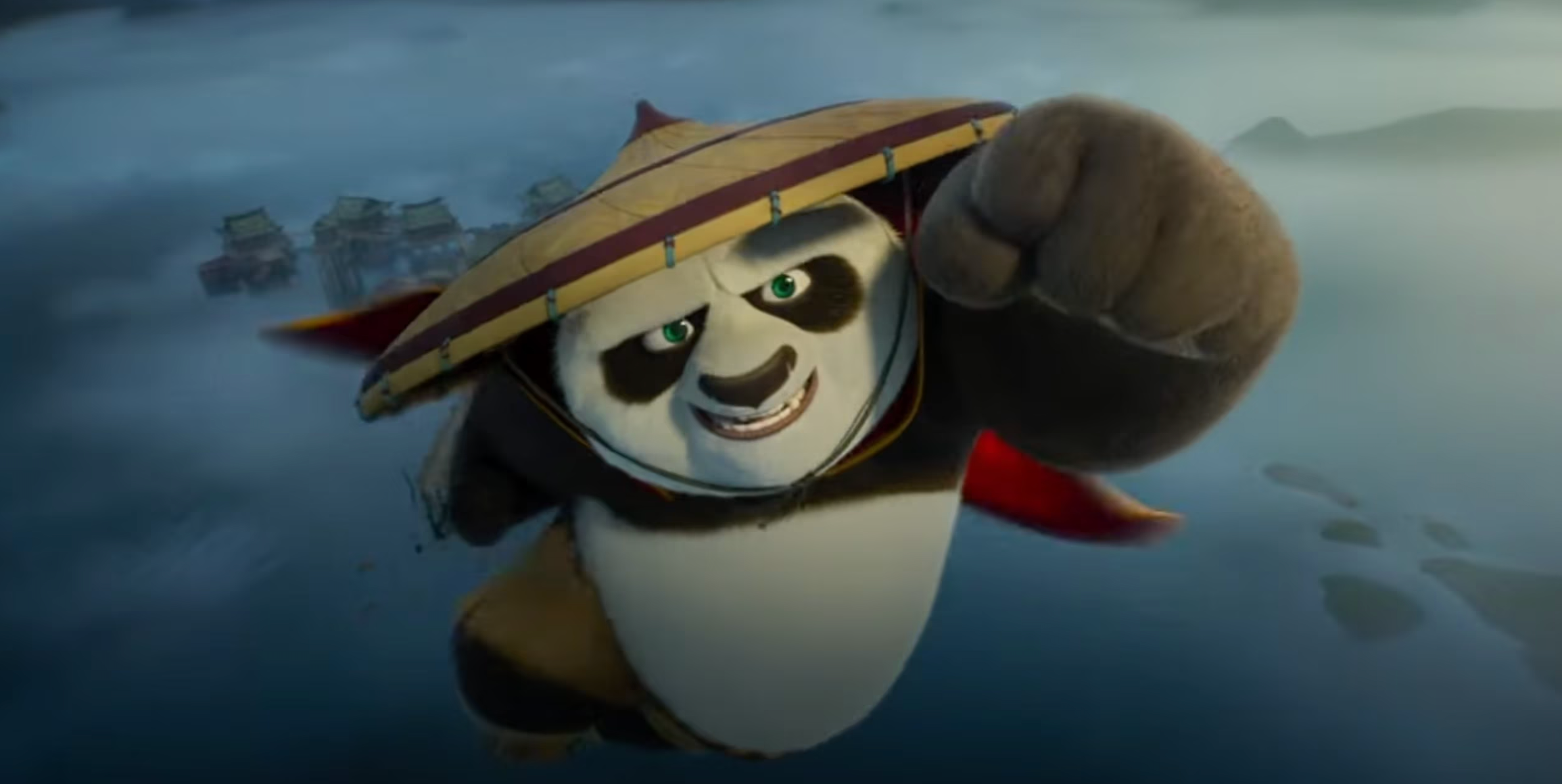Jack Black’s Kung Fu Panda 4, another bonafide hit in another of Dreamworks’ select IPs, continues to pump past $200 globally sometime this week (of 3/18) as it awaits more releases in other international territories. Legs, much like its predecessors, should put it around $450-500 million worldwide, albeit the nudge from China won’t be as big as it was for its predecessor’s $155 million eight years ago. The competition does upscale a bit later this month, and in doing so, it could affect the legs of our animated hero. Conservatively, a $175 million domestic and $250 million internationally should keep it treading along, especially with a smaller budget this time (sorry to folks wanting to hear Angelina Jolie, Jackie Chan, or Randall Duk Kim).
With our review out (available here) and having caught minimal “Skadooshes” online about the film, it galvanized this writer to consider debating whether the fourth installment with Po and Co. should be joining the “not-so-fantastic fours” club. There are some recent ones that spring to mind that fell into this trap (think The Matrix Resurrections and Thor: Love and Thunder) when it came to “revamping the IP” and then having some studios reconsider, “Maybe we should’ve capped it as a trilogy.” See, it’s cumbrous to attain some peace of mind when you have a product folks will enjoy on the one hand, but then others subconsciously saying, “That’s it?” Not all titles can be a Ghost Protocol or a Rocky IV.
Indubitably, families will bustle to their local theaters to enjoy an adequate film product geared toward the young ones’ interests. However, when analyzing the core of Kung Fu Panda 4, the feature contains an adamantine attitude to not shaking up the atmosphere and vibes associated with our giant, lovable panda. Screenwriters Jonathan Aibel and Glenn Berger, who’ve been with this series since its inception, seem to lace this feature with decadence passively and resist any urge to pull our hero into a different (let alone maturing) direction.

The first three installments, serving more dutifully as a trilogy, brought the grand purpose of introducing a clumsy panda and evolving his character beyond a kung fu fanatic. Jack Black’s eccentric take on Po amused us, but the surroundings of wisdom and pathos gave sympathy towards his journey to becoming recognized as “The Dragon Warrior.” The Furious Five, Masters Oogway and Shifu, and Po’s adoptive father brought fantastic synergy to this path for Po to recognize his abilities and confidence in the first tale. The themes explored were imperative in making it stand out as much as it did and still make it one of the best-animated films to this day.
Granted, the follow-ups dialed it back in percipience. Still, they struck more with emotion and juvenile stunts so audiences could remain occupied with more kick-butt action and colorful animation. Folks still get teary-eyed about inner peace and letting the past pain go in the second installment, and the element of chi in the 3rd chapter is pivotal to humanity’s unity with the universe’s imperfections and energy. It’s as if the production crew wanted to send a message in each installment to make it their own. And, of course, who could forget Po’s affinity for what was next on the menu?
Even the villains carried weight beyond your prototypical, monotonous “bad guy” you see in every other superhero/live-action film nowadays. Tai Lung embodied a skillful warrior, determined to succeed despite not being prophesized for greatness. He even dismantled his relationship with his adopted father, Master Shifu, to get his desired answers (by trying to take the Dragon Scroll) and make his destiny. Lord Shen’s narcissistic, cunning attitude makes him imposing, especially as a character with ambition and a strong history integrated with Po’s backstory. General Kai’s brute strength and formidable chi power had him easily take down other masters (including his former comrade Oogway), making Po and his pals look like crafty underdogs.
Now, we pivot to the fourth film, where many themes and storytelling are jettisoned for a more systematic approach. There’s this set-in-stone approach where Po must now search for a candidate to take his place as the Dragon Warrior so he can ascend to spiritual leader status. Didn’t he technically do that when he “mastered” chi at the end of the third film? And why are we given an arbitrary explanation for why Po, a character who has evolved throughout each tale, gets handicapped by Shifu that he needs to make this drastic change?
What unfolds is Po stumbling upon a thieving fox named Zhen and setting on a journey with her to stop the nefarious shape-shifting Chameleon, who wants to steal the kung fu from all the masters that Po has beaten. No riveting themes or messages are attached; it is merely a familiar tale of two folks banding together to stop another foe. The Chameleon is neither as epic nor bodacious as the past villains and has no deep connection with Po or other characters. Pulling the past villains we’ve already seen and embraced was a gripping selling point, but they’re tossed aside as canon fodder so we can build Chameleon as an unstoppable force….for a final battle that concludes in under seven minutes.

Even more vexing is that Po doesn’t learn much in this outing other than trusting others (yet this was already touched upon in the second installment) and learning that change will always occur (subtly occurring throughout the past motion pictures). Po’s fathers stand in as mere footnotes on this adventure, and you get a hastily thrown-together explanation for why the Furious Five are absent. In essence, it’s a brand-new tale devoid of flavor and substance and more of a rewind of tactics you’ve seen for the past sixteen years. One can concede that this is a functional narrative that’ll boast great fun for the family. However, it remains overly similar compared to its predecessors, never popping with a sense of zest.
In the fourquel club that practically set up the death knell in the series, it’s painfully evident which ones tainted their possibilities. The Matrix Resurrections departs from its trilogy’s ambition and themes with a disjointed and shallow ingenuity towards another Neo/Trinity love affair. Some self-referential jabs and Morpheus and Agent Smith recastings weren’t exactly tokens of gestures, so you can decide if those were worth a gander. Thor: Love and Thunder was a far cry from its predecessor’s invigoration and turbocharging atmosphere because someone told Taika Waititi to overindulge in all the juvenile stunts to make it an imbroglio of sorts (even when you had Christian Bale ruling the screen and some adequate visuals). Terminator Salvation, Transformers: Age of Extinction, and The Next Karate Kid were bland rehashes that sorely missed their key-affiliated stars. There are more titles to stockpile here, but it’s enough to certify this point.
In Kung Fu Panda‘s case, it’s skirting that line of joining this crowd. Although admittedly functional, it is easily the worst of the series thus far because it played too snuggly. Lacking the nuggets of wisdom and a non-effort to spice up Po’s noodles ensures this fourquel will remain a tchotchke compared to its predecessors’ robustness, warmth, and replayability.





